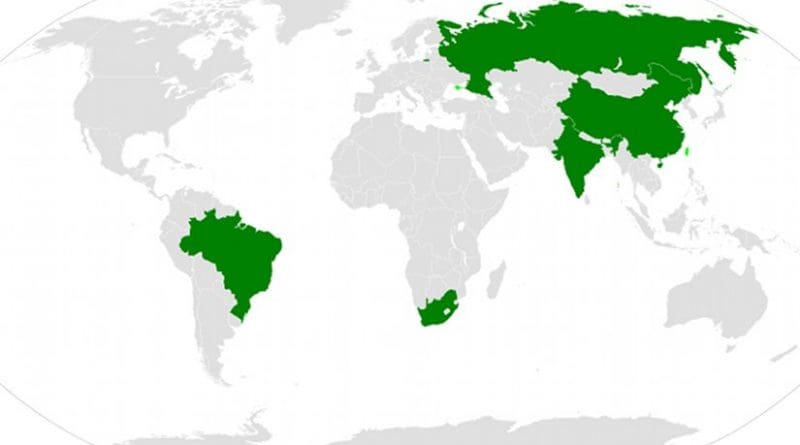BRICS Summit: Will It Reorient Itself To New Global Challenges? – Analysis
By C Uday Bhaskar
The 8th BRICS Summit being held in Goa (Oct 15-16) comes at a time when the global strategic and geopolitical framework is in considerable flux and tumult. This is being compounded by the manner in which the last phase of the US election is unfolding.
More than the extreme vulgarity and gender coarseness ascribed to Donald Trump, what has been tainted is the international perception about the US as the major global power. Irrespective of who will occupy the White House in January next, the image of the US has been badly sullied. The deeper anxiety is contained in a question that I have heard in professional circles: “Can the world be safe with a Trump finger on the nuclear button next year?
The Goa summit is unfolding against a complex strategic backdrop which includes the pro-Assad Russian exertion in Syria that pits Moscow against the US led western alliance; the challenge still posed by the Islamic State; the Chinese discomfiture over the South China Sea tribunal award and the determination to plough its own furrow; India’s own recent experience over terrorism and Pakistan’s role in sponsoring this malignancy; and Delhi’s frustration over the stance adopted by Beijing, Moscow and even Washington in relation to tacitly endorsing Rawalpindi (Pakistan’s military headquarters).
While BRICS can claim some progress in setting up a bank – the New Development Bank and some consensus on managing currency liquidity as limited insurance against global fiscal turbulence – it is a relatively smaller economic grouping in the international context. The combined GDP of the five BRICS nations for 2015 (World Bank figures) is $16.35 trillion. The comparable figure for the US alone is $17.94 trn. And if Japan at $4.12 trillion is added – the US-Japan combine alone is US $ 22 trillion and the difference is $5.71 trillion. And current estimates suggest that in 2016, this difference will increase to $6. 35 trillion – that is BRICS vs US-Japan.
BRICS is no doubt an important forum and the fact that it brings China, India and Russia together without the US and its alliance partners has its own import. Paradoxically, the dissonance between these three nations over their respective bilateral relations (China-Russia, Russia-India, India-China) is distinctive. By extension each of them has a complex and varyingly difficult relationship with the US. Yet all four nations are mediated by the imperative of globalization and its attendant constraints and have to inhabit a contra-polar world order where the contradictory compulsion is the principal leitmotif.
The anomaly of BRICS is that Russia in 2016 will have a GDP that is half of India and a ninth of China – and yet will be the most politically assertive and powerful militarily. This includes Moscow’s sizeable WMD (weapons of mass destruction) inventory.
The final communique that emerges from Goa on Sunday (Oct 16) will provide some clues about how this five-member grouping proposes to orient itself in 2017, when geopolitical uncertainties lurk and many unresolved challenges loom large – from state sponsored terrorism and radical ideologies to regime change and an Afghanistan that, alas, has a bleak future.

